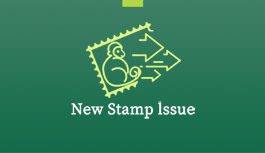Postal Business: 8610 11185
Postal Savings: 8610 95580
Logistics and EMS: 8610 11183
China Post Life: 8610 4008909999
The Postal Savings Bank of China (hereinafter referred to as PSBC, under the A-share stock code 601658.SH, and the H-share stock code 01658.HK) is officially included in the Shanghai Composite Index on December 24.
PSBC was listed on the A-share market on December 10, thus completing the H-share and A-share dual listings on mainland and Hong Kong bourses. According to the Shanghai Composite Index compilation rules, the newly-listed shares are to be included in the Index on the 11th trading day. According to the relevant index compilation rules and the adjustment principle of ranking based on the total market capitalization and turnovers, it is expected that in June 2020 PSBC will be included in the main stock indices such as the Shanghai Stock Exchange (SSE) 50 Index and the CSI 300 Index, indicating that the market highly recognizes PSBC’s comprehensive strength and long-term investment value.
Since its listing on the H-share market, PSBC has been included in the Hang Seng Global Composite Index, Hang Seng Composite Index, Hang Seng China Enterprises Index, MSCI Index, etc., and has joined the Stock Connect program.
As of the end of September 2019, PSBC had nearly 40,000 business outlets that cover 99 percent of cities and counties in China. The number of its individual clients exceeded 600 million, accounting for more than 40% of China's total population. Its total assets reached 10.11 trillion yuan (about $1.42 trillion), ranking fifth in China's banking industry. For the first three quarters of the year 2019, PSBC’s net profit was 54.34 billion yuan (about $7.78 billion), with a year-on-year increase of 16.33%. Its non-performing loan ratio was 0.83%, less than half of the industry average; while the allowance coverage ratio reached 396.10%, two times higher than the industry average.






